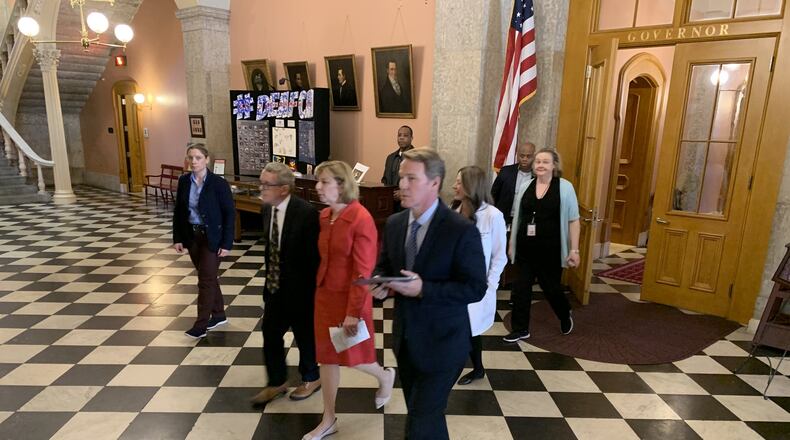Ohio Department of Health Director Amy Acton insisted the 704 confirmed cases and 10 deaths on Wednesday is just the "tip of the iceberg" because she says far more Ohioans are infected than what is being reported because of the limited availability of testing.
Acton said about 14,764 people in Ohio have been tested for COVID-19 — which is the first estimate of its kind to be released — and some areas have seen a positive rate around 5%.
MORE: Coronavirus: Area workers question essential vs. nonessential
But she said not to read too much into the rate because between 40% to 70% of Ohioans are likely to contract the virus over time, and a surge in cases and needed health care is coming.
“This is more serious than ever,” Acton said. “We’re entering a difficult time.”
Ohio Lt. Gov. Jon Husted said the state has received many questions about what businesses qualify as essential under the stay-at-home order, and business owners should read the order and use good judgment to determine if meet the criteria.
Businesses do not need a letter, certification or clearance of any kind from the state or any other agency to remain open, but they should be prepared to justify why they are an essential business and how they are following safe workplace standards required in the order, Husted said.
Businesses should not call cities, law enforcement or local or state health departments to try to interpret the essential business definitions, he said.
“They are in charge of enforcement — they cannot interpret it for you,” he said.
MORE: Coronavirus: 400,000 people visited unemployment website Tuesday, Husted says
Businesses that stay open are encouraged to write down the rational and justification of why they are an essential business, because employers that are accused of violating the order will have to explain their decision to remain in operation, Husted said.
“We need to hold everyone accountable to be fair,” he said.
He later said, “We’re not trying to crackdown on anybody, but it’s not fair for one business to do the right thing in an industry sector, and another business in that industry sector not to do the right thing.”
The safe workplace guidelines are going to be in effect for a long time, even if and when the coronavirus crisis seems under control, Husted said.
He also said the state has tried to keep its website working and operational, but it has been visited by huge numbers of people, including about 400,000 on Tuesday.
Coronavirus: Complete coverage
The state obviously wants to get businesses back open as soon as possible, but the crisis may not peak until May 1, and social distancing is the only way to slow the spread, said Ohio Gov. Mike DeWine.
Acton said Ohio has had 10 coronavirus-related deaths, up from eight on Tuesday, including one in Miami County, where a nursing home resident who died tested positive for COVID-19.
Four people have died in Miami County associated with the COVID-19 outbreak at Koester Pavilion and Springmeade Health Center, local health officials say. Test results are pending on some of the deceased.
Confirmed cases in Ohio increased by 140 cases to 704 on Wednesday, which was the largest one day increase in the number of new cases. There new 122 new cases on Tuesday and 91 on Monday.
Also, about 182 people in Ohio are hospitalized with the virus, including 75 who are in the intensive care unit, Acton said.
The infected include 333 females and 371 males, and 116 of the people who tested positive are health care workers (16% of the total), she said.
Health care workers are being tested more frequently than other segments of the population, because they are at higher risk of exposure, she said.
More than one in five Ohioans who have coronavirus are being hospitalized, and more than half of those patients need intensive care, she said.
MORE: Coronavirus: A fourth Miami County nursing home resident dies
The actions Ohioans are taking to stay home and limit interactions and possible exposure to the virus are intended to take pressure off the health care system, and intensive care units specifically, Acton said.
“We know we are going to need to double the capacity that we have in ICUs in the days to come,” she said, adding soon she’ll have more to share about plans to how achieve that.
About the Author

